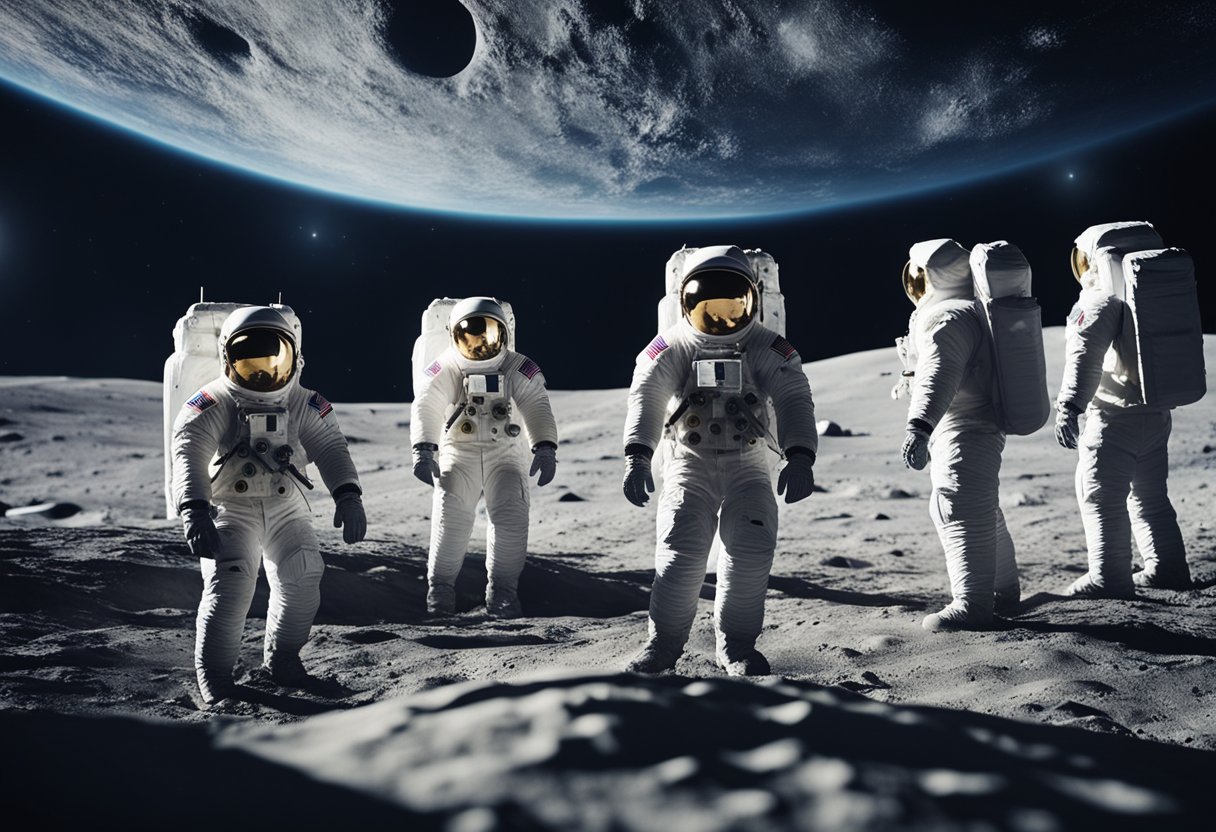
Recreational Activities in Space – The allure of the cosmos has always captivated us, beckoning humanity to explore beyond the confines of our Earthly existence. Up among the stars, astronauts experience a unique environment that is not only challenging for work but also for leisure. In the microgravity of space, traditional terrestrial activities take on a new twist, making recreation in space a curious subject of both study and enjoyment. As we advance our spacefaring capabilities, understanding the recreational needs of those who travel and potentially live in space becomes as vital as any other aspect of human spaceflight.
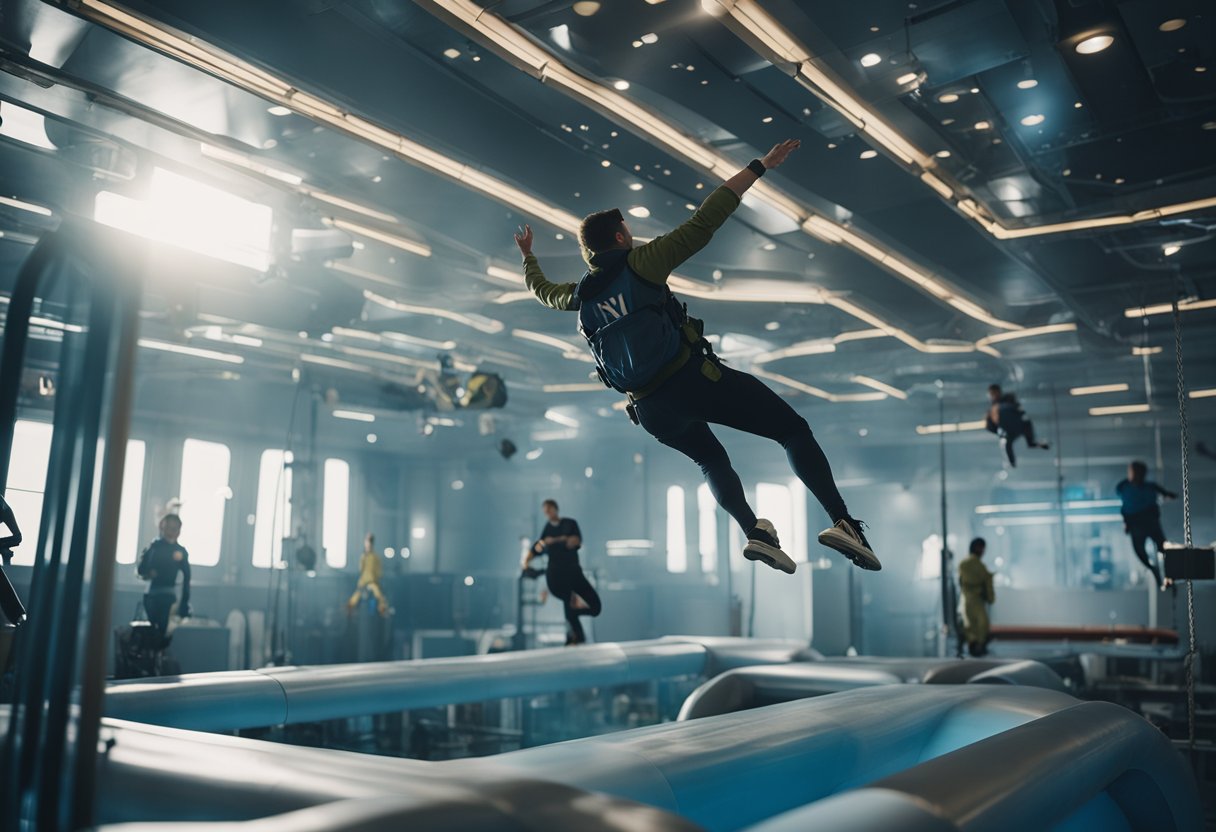
Leisure time in orbit isn’t a new concept; since the earliest space missions, astronauts have taken books, music, and even musical instruments to space. The development of recreational activities has been an ongoing process to maintain mental health and wellbeing, providing a necessary balance to the strenuous demands of space missions. As missions lengthen and the prospect of space tourism comes closer to reality, with ventures like SpaceVoyageVentures.com highlighting anticipated space tourism experiences, the question of how astronauts and future space travellers will spend their free time has become even more pressing.
Beyond the confines of spacecraft and the International Space Station, the future of recreation in space is poised to expand dramatically. Plans for lunar bases and Mars colonies imply that recreation will not only be a past-time but an integral component of extraterrestrial urban planning. The horizon of space leisure is boundless, from physical sports adapted for zero-gravity conditions to virtual experiences uniquely suited for the cosmos.
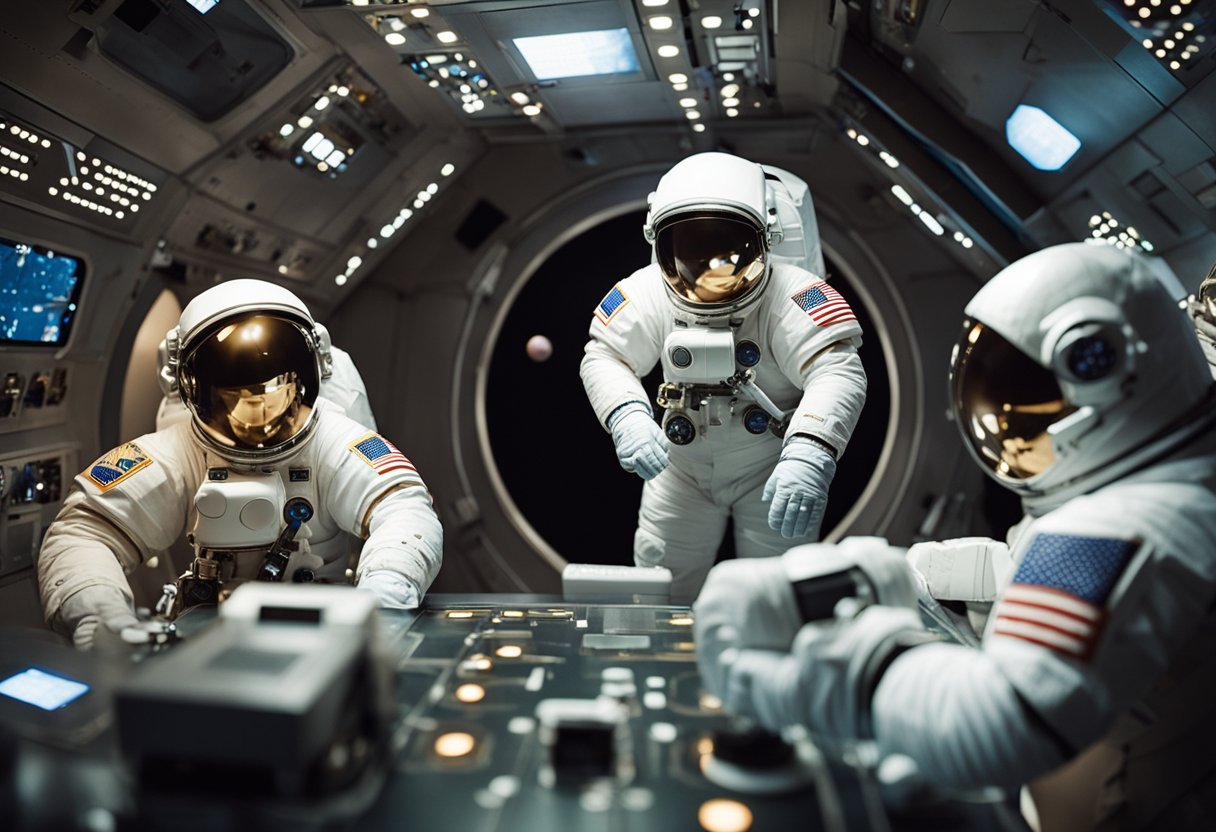
In the tapestry of space history, the development of recreational activities plays a unique role in humanising the cosmic journey. As we ventured beyond Earth’s atmosphere, the necessity and design for leisure in the void of space evolved, reflecting our commitment to not only survive but also thrive.
Initially, the notion of recreation in space was a secondary thought, overshadowed by the colossal challenge of just reaching and surviving in the extraterrestrial environment. Yet, as the International Space Station (ISS) became a home away from home for astronauts, the concept of leisure took form—driven by both mental health and physical well-being considerations. Chess games, music, and even watching sports events became essential forms of relaxation for those aboard the ISS.
Designing for leisure began with accommodating simple, weightless amusements such as space-friendly musical instruments and experiments with floating balls of water. NASA, alongside other national space agencies, established that the psychological well-being of astronauts was paramount, which led to the integration of recreational activities within the strict confines of a space station.
As our tenure in space lengthened, so did the sophistication of our policies regarding recreation. Both NASA and the European Space Agency (ESA) contributed to well-rounded guidelines that embrace a variety of recreational options, including exercise regimes, digital entertainment, and cultural celebrations.
Strides in recreational policy design have been measured to align with the changing dynamics of space occupation. With agencies such as ESA expressing intent for moon villages and NASA planning for Mars expeditions, our approach had to account for longer missions, mandating more robust recreational frameworks to cater to the psychological needs over extended periods.
For example, exercise not only combats the detrimental effects of microgravity on the human body but also serves as a form of leisure. The ISS is equipped with specially designed exercise equipment, and schedules are constructed to ensure astronauts can routinely engage in physical activities, reflecting their importance in both health policy and recreational agendas.
While the history of recreational activities in space has predominantly revolved around those conducted on space stations like the ISS, the growing interest in space tourism suggests burgeoning avenues for leisure. The advent of companies targeting space tourism, exemplified by sites such as SpaceVoyageVentures.com, heralds a future where non-professional astronauts might enjoy recreational experiences beyond Earth’s atmosphere. Here, the dialogue shifts from sustaining astronauts to enriching the experiences of civilian space travellers.
We recognise a future where policies must not only consider the needs of professionals but also the desires of space tourists, incorporating recreational designs that are both safe and satisfying for the broader demographic expected to visit space in the years to come.
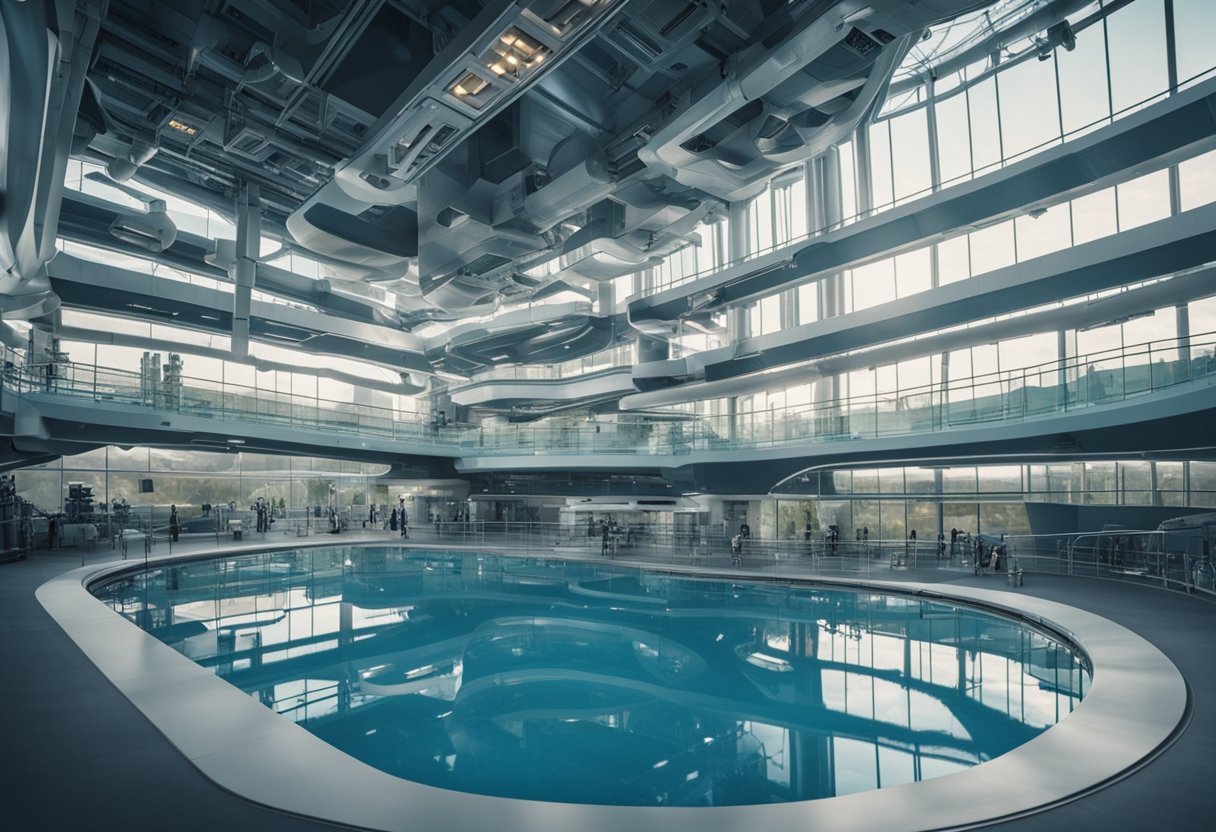
We are witnessing a transformative era where recreational activities are becoming a tangible reality in the realm of space travel. The design and planning of spaces for leisure on spacecraft and the International Space Station (ISS) exemplify the collaboration between urban planners, architects, and space agencies like NASA and ESA.
The ISS has been our orbiting home for scientific discovery and international cooperation. Understanding the unique conditions of microgravity, architects and designers from NASA and other partner agencies like ESA have meticulously planned recreational areas on the station to ensure astronauts’ mental well-being. These areas are intended to offer comfort and a change of scenery from the typical work environment. For instance, the Cupola, a small module with panoramic windows, allows crewmembers to enjoy breathtaking views of Earth, serving as a serene retreat for relaxation.
When designing spacecraft for future recreational travel, space agencies and private enterprises such as SpaceVoyageVentures.com are considering the physical and psychological needs of space tourists. Layouts are incorporating communal areas where passengers can socialise and enjoy leisure activities. These designs are influenced by principles of urban planning to create spaces that are not only functional but also provide a sense of normalcy. Spacecraft like the ones proposed for orbital vacations will likely include dedicated modules where tourists can enjoy zero-gravity games and experience the novelty of space travel in a relaxed atmosphere.
We understand that staying physically active is crucial for maintaining good health, especially in the challenging environment of space where gravity is absent. This unique setting requires specialised exercise routines and the development of innovative sports to keep astronauts fit and healthy. Let’s explore what physical activities look like when far from Earth’s gravitational pull.
In the absence of gravity, the human body experiences a range of health issues, such as muscle atrophy and bone density loss. To mitigate these effects, we employ a variety of exercise equipment designed specifically for the conditions in space. Astronauts dedicate around two hours per day to these routines, which are critical for their well-being during extended stays aboard the International Space Station (ISS).
Astronauts’ perseverance in these routines is essential for their health and ability to readjust to Earth’s gravity once they return.
The introduction of sports in space presents an exciting possibility for recreation in zero gravity. In the spirit of human ingenuity, we see a variety of games adapted for the microgravity environment.
The evolution of these activities not only provides necessary physical activity but also offers a mental health break, helping to maintain astronauts’ morale and teamwork in a confined environment. As we look to the future, with companies like SpaceVoyageVentures.com inspiring the prospect of space tourism, we’re certain to see an expansion in the type of recreational activities available in zero gravity.
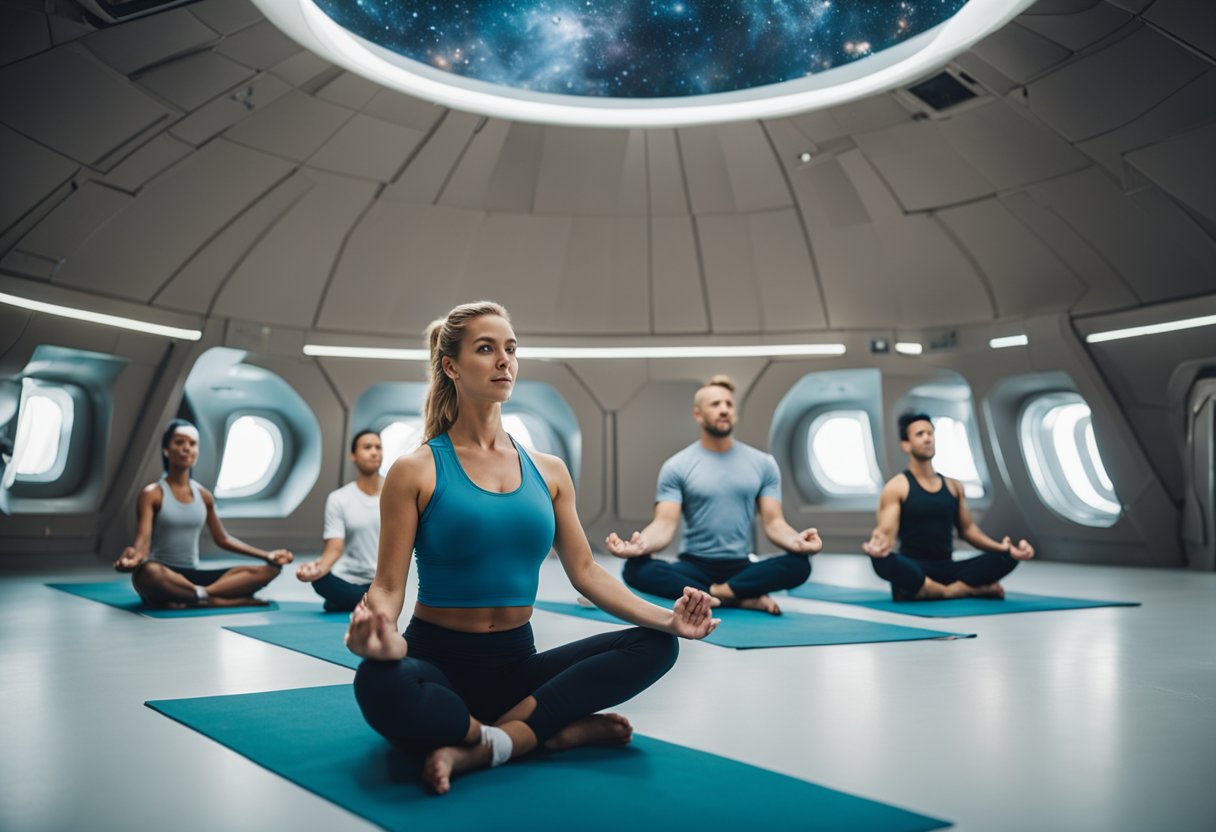
Ensuring the mental health and wellbeing of astronauts is paramount for the success of space missions. We focus on the importance of recreational activities as a means to provide stress relief and strengthen community and cultural ties among crew members.
The unique environment of space can induce stress due to factors such as isolation and the absence of Earth’s natural atmosphere. To combat this, recreational activities are incorporated into astronauts’ schedules. Physical exercise, for instance, is not just essential for maintaining physical health but is also a powerful stress-reliever. Onboard the International Space Station, astronauts are known to exercise for up to two hours daily, using equipment designed for microgravity.
Games and entertainment also play a crucial role. Whether it’s digital gaming or traditional pastimes adapted for space, these leisure activities are invaluable for diverting the mind from the pressures of space living. In envisioning future space tourism, companies like SpaceVoyageVentures.com anticipate recreational activities as an integral part of the space travel experience, ensuring that mental well-being is catered for alongside the thrill of space exploration.
Cultural activities and the building of a sense of community are critical for long-duration space missions. They foster a shared identity and mutual understanding that can significantly impact psychological well-being. In space, cultural exchanges might involve astronauts sharing stories, enjoying films, or celebrating festivals from their respective heritages, enhancing mutual respect and camaraderie.
Moreover, interviews and interactions with Earth-based audiences allow space travellers to maintain a connection with the wider community back home, mitigating feelings of isolation. These moments of connection can be live-streamed, allowing countless individuals to partake in the space experience, effectively building a bridge between Earth-bound cultures and those pioneering the regions of space.
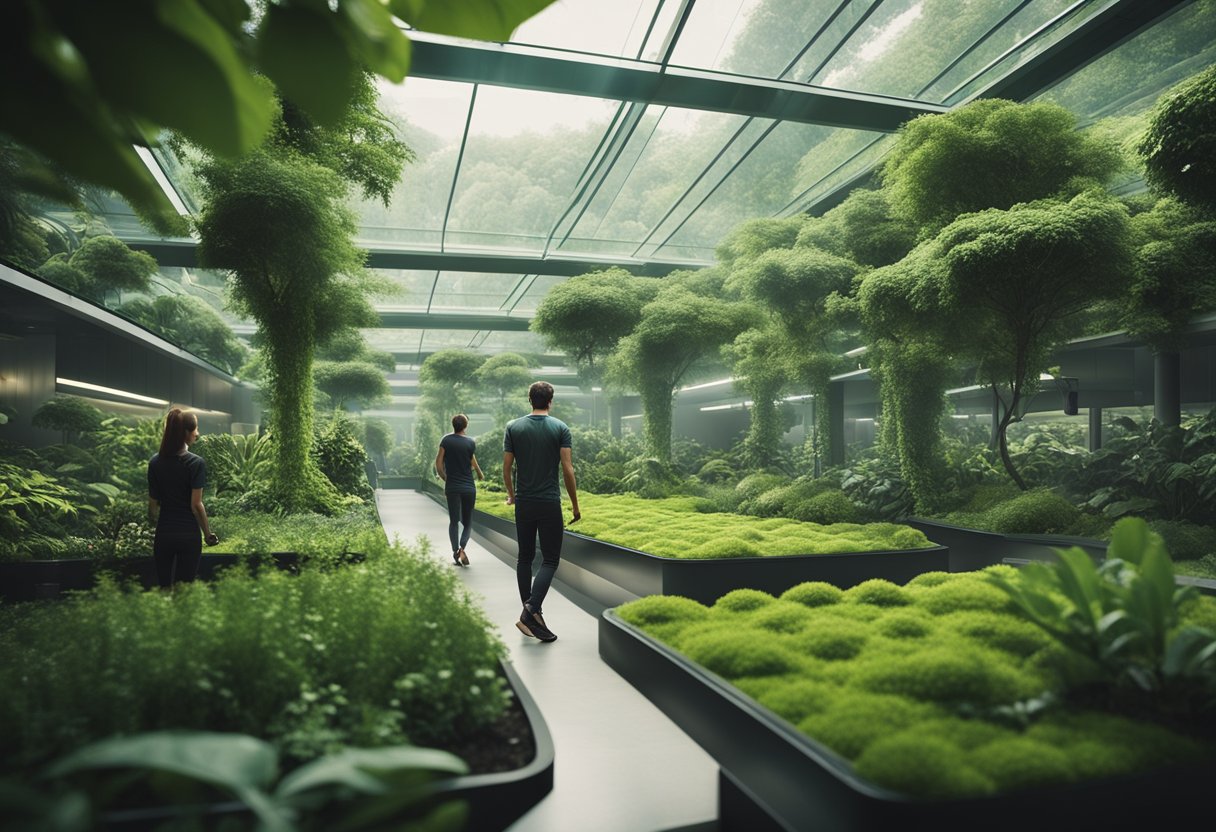
As we push the boundaries of space exploration, the creation and maintenance of green spaces beyond Earth serve not only a psychological but also an ecological purpose. These initiatives aim to replicate Earth’s biodiverse ecosystems within the confines of extraterrestrial environments.
Simulating green spaces on space stations is critical for both the well-being of astronauts and the advancement of urban planning in space habitats. We utilise virtual reality (VR) to generate immersive environments that mimic parks and nature reserves, offering a respite from the enclosed, artificial atmosphere of a space station. For instance, SpaceVoyageVentures.com discusses concepts for future space tourism which include experiences of simulated natural landscapes, giving passengers a taste of Earth while they traverse the cosmos.
Design plays a pivotal role in these simulations, focusing on creating realistic representations that provide the sensory experiences one would expect from actual nature. We incorporate biodiversity in these digital constructions to the extent permitted by current technology, enriching the psychological benefits and offering a more authentic experience.
Our approach to biodiversity in spatial design hinges on the integration of varied ecological systems into living and working spaces beyond Earth. Through careful planning, we aim to introduce a range of plant and microorganism species to create sustainable and self-regulating ecosystems within space stations and potential future colonies.
These designed spaces typically include green spaces where astronauts can engage with living plants and natural materials, an essential aspect of urban planning in space habitats. By promoting biodiversity in these designs, we can enhance life support systems, provide natural cycles of waste decomposition and air purification, and offer psychological benefits for long-duration missions.
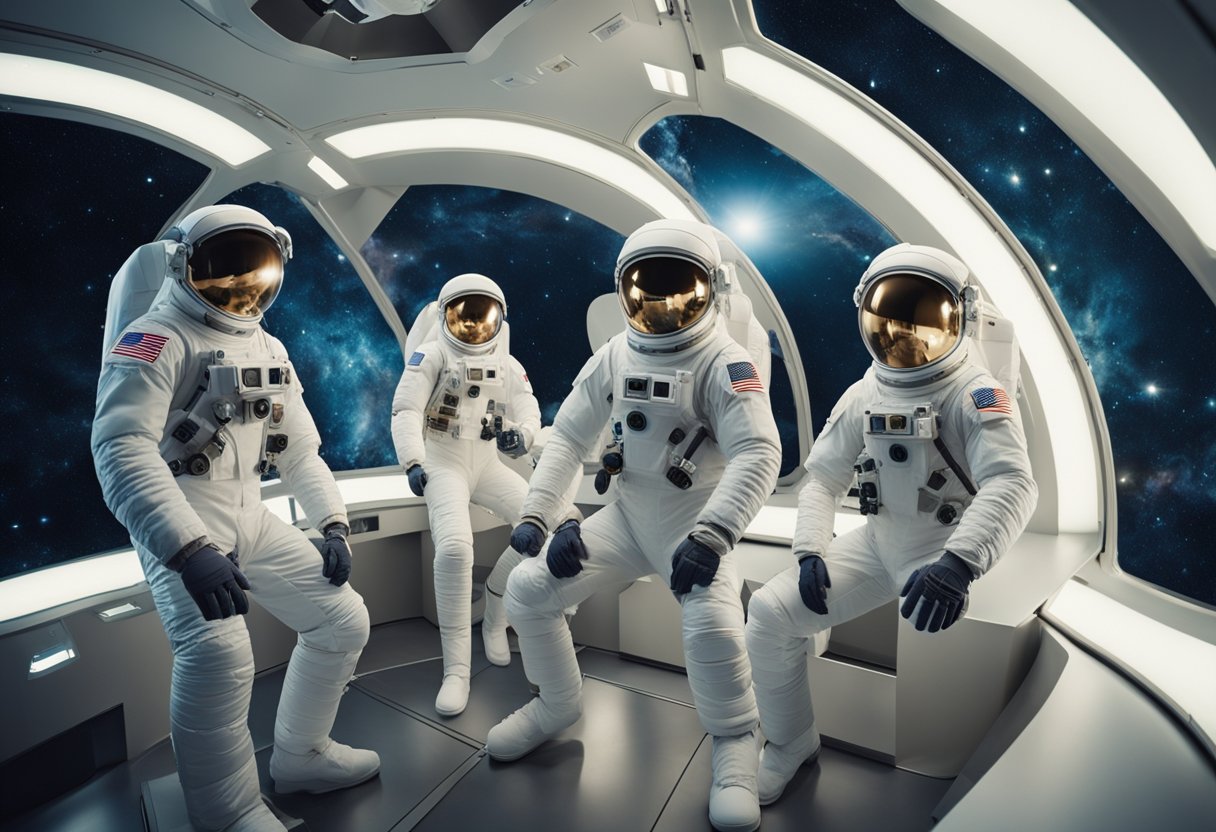
In recognising the unique challenges of space, we focus on the implementation of sustainable practices for recreational activities off-world. Our methods ensure longevity and minimal environmental impact, which align with contemporary urban planning principles, even as we extend our reach into the solar system.
Water is a precious resource in space, hence, water recycling systems are integral to our aquatic leisure facilities. Water recycling is not just sustainable but necessary for pool-based activities aboard spacecraft or space habitats. We utilise advanced filtration and purification technologies to maintain a continuous supply of clean water, which is indispensable for any aquatic recreation.
The equipment we use for recreational activities in space is designed to be energy-efficient. Relying on renewable resources, such as solar energy, this equipment is both sustainable and suitable for the solar system’s varying environments. Our innovative approach includes the use of materials and design techniques that reduce energy consumption without compromising the quality of the recreational experience.
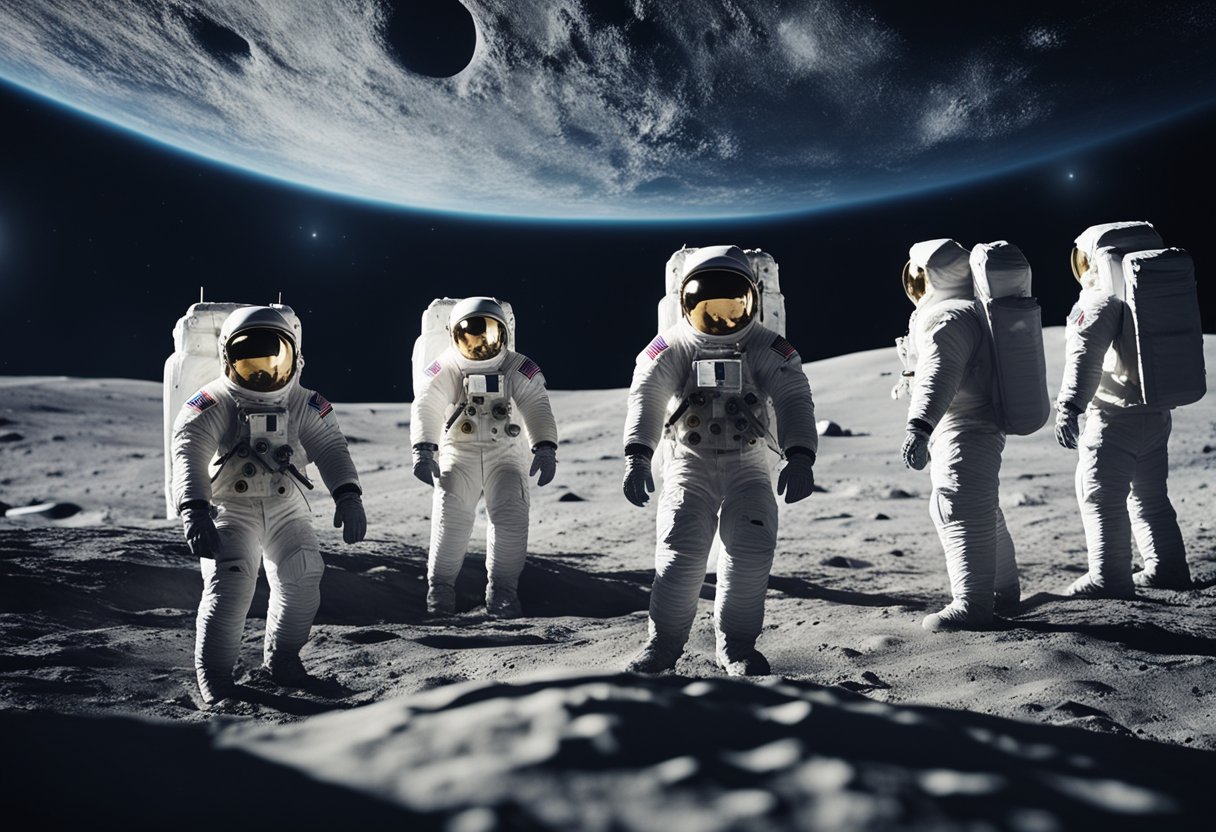
Given the unique environment of the Moon, leisure and free time activities for lunar visitors have to be innovatively designed, taking advantage of the low gravity and the barren lunar landscape.
Outdoor recreation on the Moon offers unparalleled experiences. While traditional Earth sports are adapted to the Moon’s lower gravity, allowing extraordinary feats such as higher jumps or further throws, we are also in the position to develop completely new kinds of sports and outdoor activities. For example, Moonwalks could evolve into a tourist favourite, offering the excitement of exploring the lunar surface much like hikes in national parks back on Earth, with the added allure of “one small step” novelty.
Nature as we know it doesn’t exist on the Moon. Yet, the awe of traversing an alien terrain, the sheer scale of the craters and the views back to Earth present a form of natural spectacle in their own right. In time, we might even see the development of lunar parks, designated areas where visitors can safely experience the lunar surface without the risk of disturbing scientific sites or lunar operations.
Our concepts of leisure on the Moon also encompass cultivating habitats that could include aspects of biodiversity and urban planning borrowed from Earth. Imagine bio-domes teeming with plant life, offering a contrast to the grey expanse outside – spaces where lunar residents and tourists alike can unwind or socialize. These habitats can be designed to simulate terrestrial parks, providing a touch of greenery and nature in the stark lunar environment.
As for our sustained ventures into space tourism, SpaceVoyageVentures.com details plans for such leisure habitats in future lunar urban designs. These habitats wouldn’t just offer recreational benefits; they would support the mental well-being of lunar travellers by connecting them back to Earth’s natural environments, even while being millions of miles away. It’s an ambitious blend of cosmic exploration and terrestrially inspired leisure planning, rooted in the vision of making life on the Moon as enriching as life on Earth.
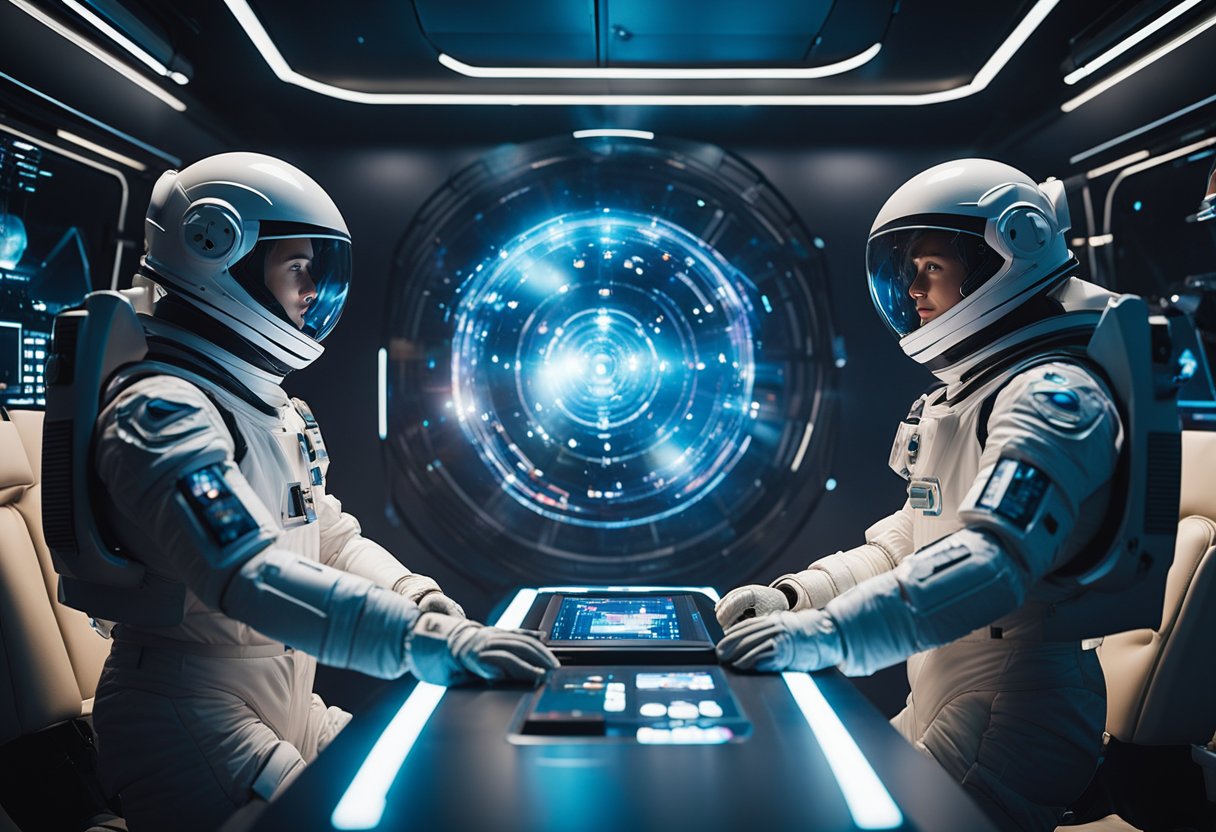
As we consider the future of human activities in space, virtual reality (VR) emerges as a transformative tool, serving not only for scientific purposes but also for entertainment and skill training. This technology transcends terrestrial boundaries, allowing astronauts to indulge in gaming experiences that mimic the wonders of space travel and exploration.
With the advancement of technology, virtual reality has revolutionised our recreational activities in space. VR enables us to simulate environments for extraterrestrial exploration, satisfying our innate curiosity about the unknown realms beyond Earth. These virtual simulations are not just for leisure; they are also critical training tools, preparing astronauts for the complexities of space missions.
Virtual simulations often replicate the surfaces of celestial bodies such as the Moon or Mars, providing us with the closest possible experience to walking on these extraterrestrial terrains. By donning VR headsets, we can navigate virtual landscapes, operate rovers, and even practice maintenance tasks that would be necessary in real-life lunar or Martian colonies.
Moreover, VR games designed for space environments tap into cutting-edge technology, creating immersive experiences that blend entertainment with education. Such games are tailored to maintain astronaut morale during long-duration missions and keep our spirits high with engaging activities that defy the isolation of space.
Furthermore, for those of us on Earth, explorations of vast cosmic landscapes have become accessible through various VR experiences, offering a taste of what future space tourism could offer. In anticipation of this future, SpaceVoyageVentures.com documents the strides we are making towards making space tourism a reality, showcasing the potential for VR to enhance these otherworldly travel experiences.
In essence, virtual reality serves as a gateway to experiencing the marvels of space without leaving the International Space Station (ISS) or Earth, propelling our gaming and recreational activities to new heights and keeping the excitement of space exploration alive.

As we envision life beyond Earth, the concept of urban planning takes on new dimensions. It’s our responsibility to design space habitats that not only support human life but also foster a sense of community and well-being through public spaces and walkways.
Public spaces are the heart of any habitat, terrestrial or extraterrestrial. In space colonies, community areas are vital for providing a sense of normalcy and belonging. Indoor parks and green spaces could replicate Earth’s environments, offering psychological benefits and a connection to terrestrial nature. These areas would also serve scientific purposes, contributing to air purification and potentially food production within a closed-loop ecosystem.
In the bold venture of urban planning off-world, we have observed proposals for three off-world designs for future cities, which include plans for public spaces that promote social interaction and recreation. Such planning is crucial as it aids in community building, allowing inhabitants to form connections just as we do on Earth.
Creating pathways and trails tailored for space walks is another crucial element of urban design in space colonies. These designated areas would not only provide opportunities for recreational walking and exercise but also serve important operational functions. They would allow pedestrians to move safely and efficiently throughout the colony, potentially offering stunning views of the cosmos.
The incorporation of urban green spaces into these paths can enhance their utility and appeal. Incorporating plant life along walkways can introduce a splash of nature, further improving the mental health and well-being of the colonists. Walking paths, both for leisure and transportation, are integral to the urban planning of any space habitat, ensuring that all areas remain accessible and the community stays well-connected.
Our efforts in designing such habitats are informed by projects and studies currently underway, such as those documented on SpaceVoyageVentures.com, which describes up-and-coming space tourism trips and analyses their potential implications for space urbanism.
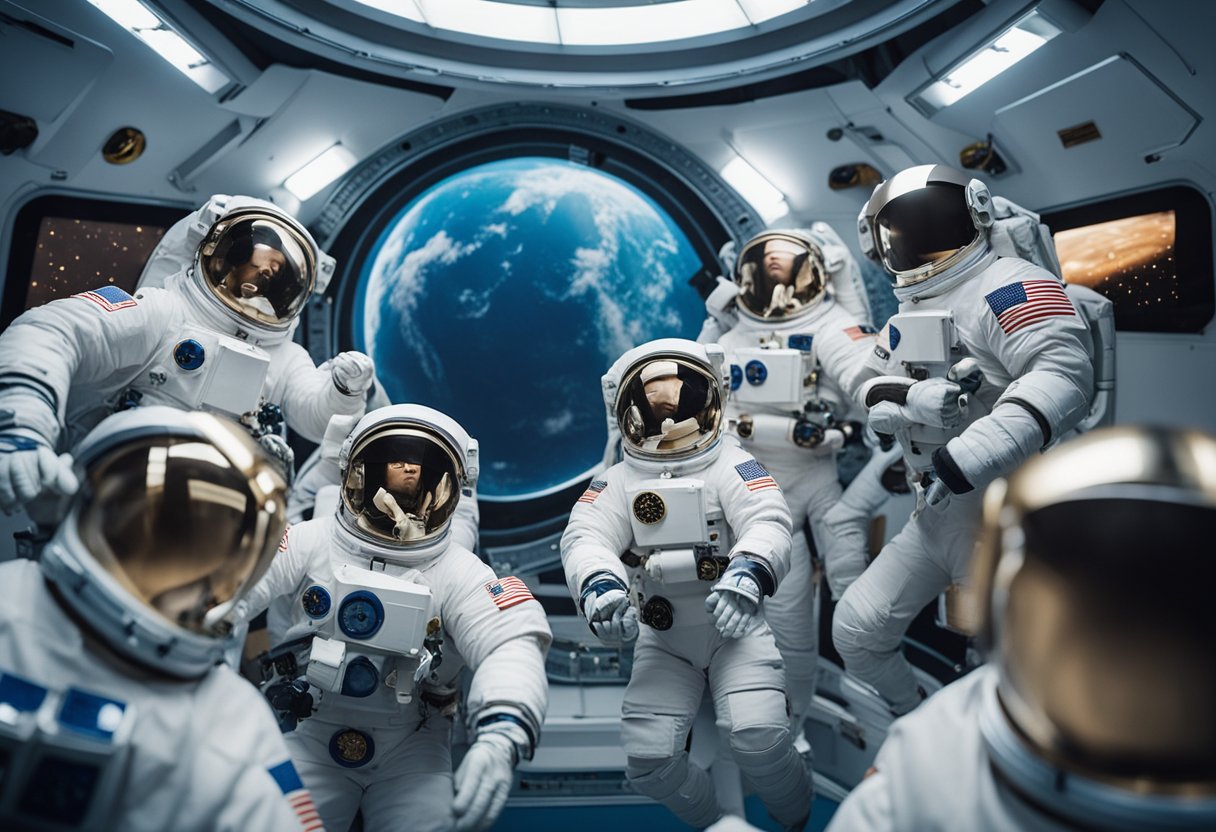
In this section, we explore the critical aspects of recreational activities in space, focusing on the well-being of astronauts and the exciting prospects of leisure beyond our planet.
Recreational activities in space play an essential role in maintaining the health and psychological well-being of astronauts on long-duration missions. With the gravity conditions in space vastly different from those on Earth, specially tailored leisure plans are imperative. For example, aboard the International Space Station, astronauts engage in various forms of exercise to combat muscle atrophy and bone density loss. The importance of these activities cannot be understated as they ensure not only physical health but mental resilience during extended periods away from Earth.
As we look to the future, the notion of interplanetary parks and recreation isn’t as far-fetched as it once seemed. Plans for tourism and leisure on the Moon and within the broader solar system are becoming more concrete. Firms like SpaceVoyageVentures.com are at the forefront, anticipating the demand for extraterrestrial experiences. Imagine watching the Earth rise from a lunar park or playing low-gravity sports on the surface of Mars. These prospects could become a reality as technology advances and commercial space travel becomes more accessible.

We understand the curiosity surrounding how astronauts relax and stay fit in space. Here, we share insights on recreational activities catered to those in microgravity environments.
In space stations, relaxation can include looking out of the window at Earth, personal hobbies, reading e-books, and digital entertainment on tablets. Recent developments in virtual reality offer additional relaxation possibilities, enabling more immersive experiences.
Space colonies are expected to provide simulations of Earth-like entertainment such as movie nights, group games, and even musical sessions. As space tourism evolves, companies like SpaceVoyageVentures.com are exploring more options for visitors to enjoy.
Astronauts in orbit often spend their leisure time exercising, engaging in scientific hobbies, communicating with loved ones, and working on personal projects such as photography of Earth and the cosmos.
Students engaged in space programmes often partake in scientific experiments that mimic the microgravity of space. Educational institutions may collaborate with organisations like the U.S. Space & Rocket Center to offer hands-on activities and space simulations.
To combat the effects of microgravity, astronauts focus on cardiovascular activities and resistance training. Treadmills with harnesses and resistance exercise devices like the Advanced Resistive Exercise Device (ARED) are crucial for maintaining muscle and bone health in space.
Crew members sleep in specially designed sleeping bags secured to the wall or ceiling to prevent them from floating around. To simulate night, they follow a strict schedule of light exposure to maintain a regular circadian rhythm despite the 16 sunrises and sunsets they experience each day.